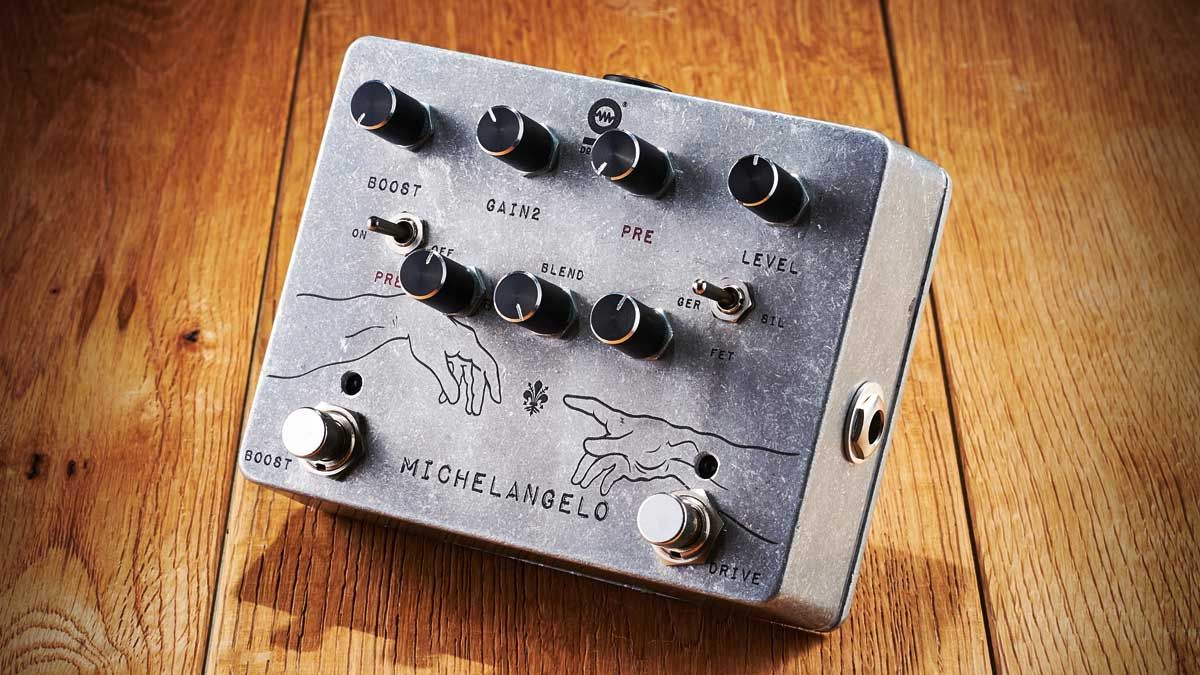Guitar World Verdict
This pedal’s sonic versatility and flexible boost options make it a practical solution for that empty pedalboard drive slot. Molto buono!
Pros
- +
Three distinct drive voices.
- +
Flexible options available for introducing boost.
- +
Clean blend knob.
Cons
- -
Layout and legending isn’t naturally intuitive.
- -
Expensive.
You can trust Guitar World
Dophix, an Italian company based in Florence, has been hand-building pedals to order since 2015. And the aim of its Michelangelo Overdrive Plus is to deliver valve-amp-style drive.
The circuitry is mainly based around JFET transistors but offers three different diode voicings with germanium and silicon sound represented as well as FET.
Level and Gain controls set up the drive sound that can be further tweaked by two EQ knobs; the ‘B’ knob works on low frequencies while the knob marked ‘M’ offers control over the top-end.
The preamp boost offers up to 15dB of gain before the signal hits the drive section, pushing it harder into distortion
The three voicings, each sufficiently distinct from the next, offer real versatility when it comes to choosing your drive flavour, be it the straight-up FET sound or the more fuzzy-edged silicon and germanium.
Further variation is available via a Blend knob to mix clean sound with drive, although it’s not the pristine clean sound as heard when the pedal is bypassed but one with extra low-end and midrange.
It’s not what we were expecting from the description, but it’s nevertheless another useful parameter for shaping the tone, particularly for adding body to the drive’s naturally scooped character and tweaking the transients.
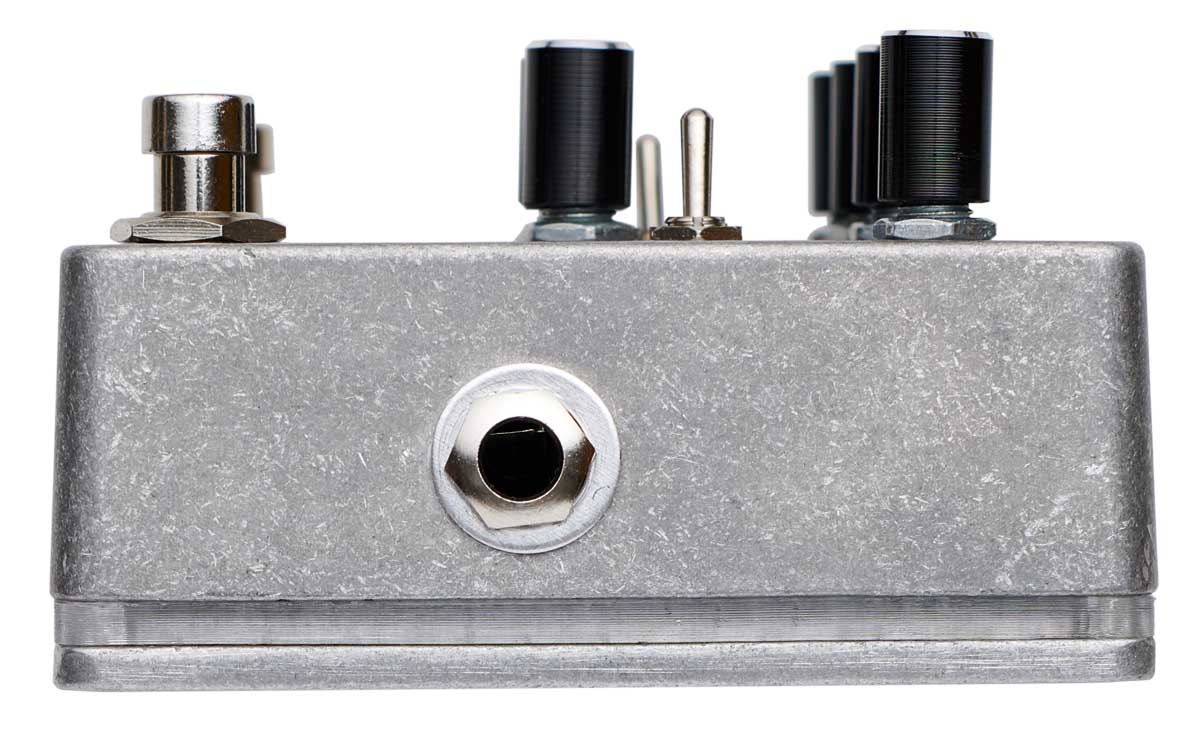
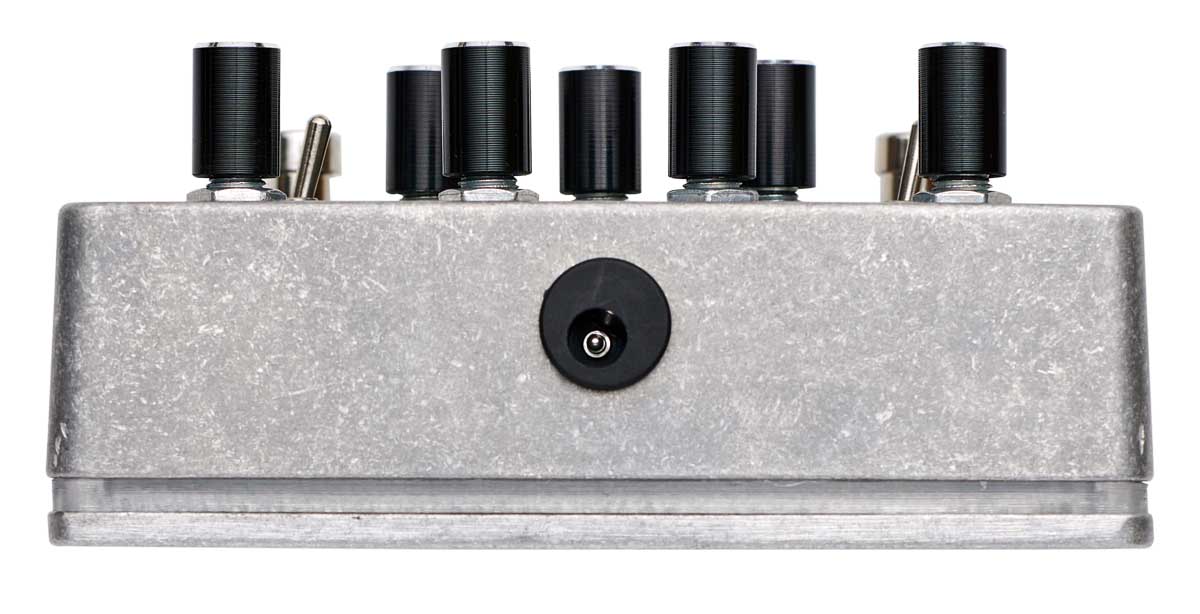
The pedal also has boosts either side of the drive circuitry. The preamp boost offers up to 15dB of gain before the signal hits the drive section, pushing it harder into distortion.
It can be turned on via a toggle switch to be part of the overall signal or switched in with the Boost footswitch. That footswitch also always brings in the output boost that offers up to a further 15dB at the output.
The combination of footswitch and toggle switch means that you can switch in either the preamp boost or the output boost or both together, offering a useful degree of flexibility, especially for onstage use where a switched transition to more gain, increased level or both together could be invaluable.
Overall, whether you want clean boost or anything from light break-up through to heavier distortions, there are plenty of variations to be discovered here.
Verdict
This pedal’s sonic versatility and flexible boost options make it a practical solution for that empty pedalboard drive slot. Molto buono!
Specs
- PRICE: $320, £275, €290
- ORIGIN: Italy
- TYPE: Drive pedal
- FEATURES: True bypass
- CONTROLS: Boost, Gain, 2, Pre, Level, B, Blend, M, Pre on/off switch, Diode selector switch (Ger/FET/Sil), Boost footswitch, Drive footswitch
- CONNECTIONS: Standard input/ouput
- POWER: 9V DC adaptor (not supplied) 60mA
- DIMENSIONS: 120 (W) x 90 (d) x 40mm (h)
- CONTACT: Dophix
Also try...
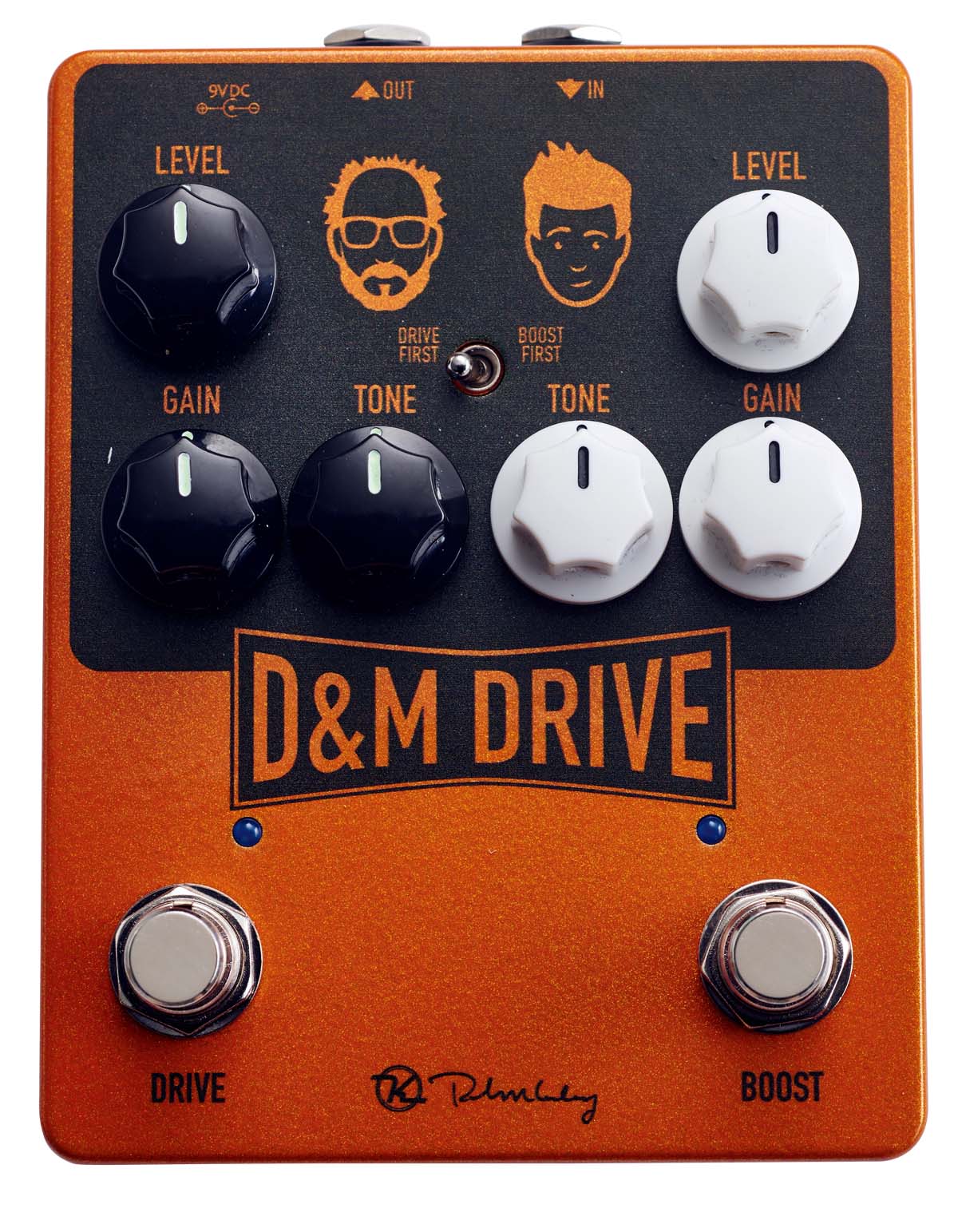
Keeley D&M Drive – $229 / £229
A dual-format design featuring overdrive and boost sections that can be used individually or stacked, with the option of putting the boost before or after the drive. The circuits can also be split – each in separate loops of a switching system.
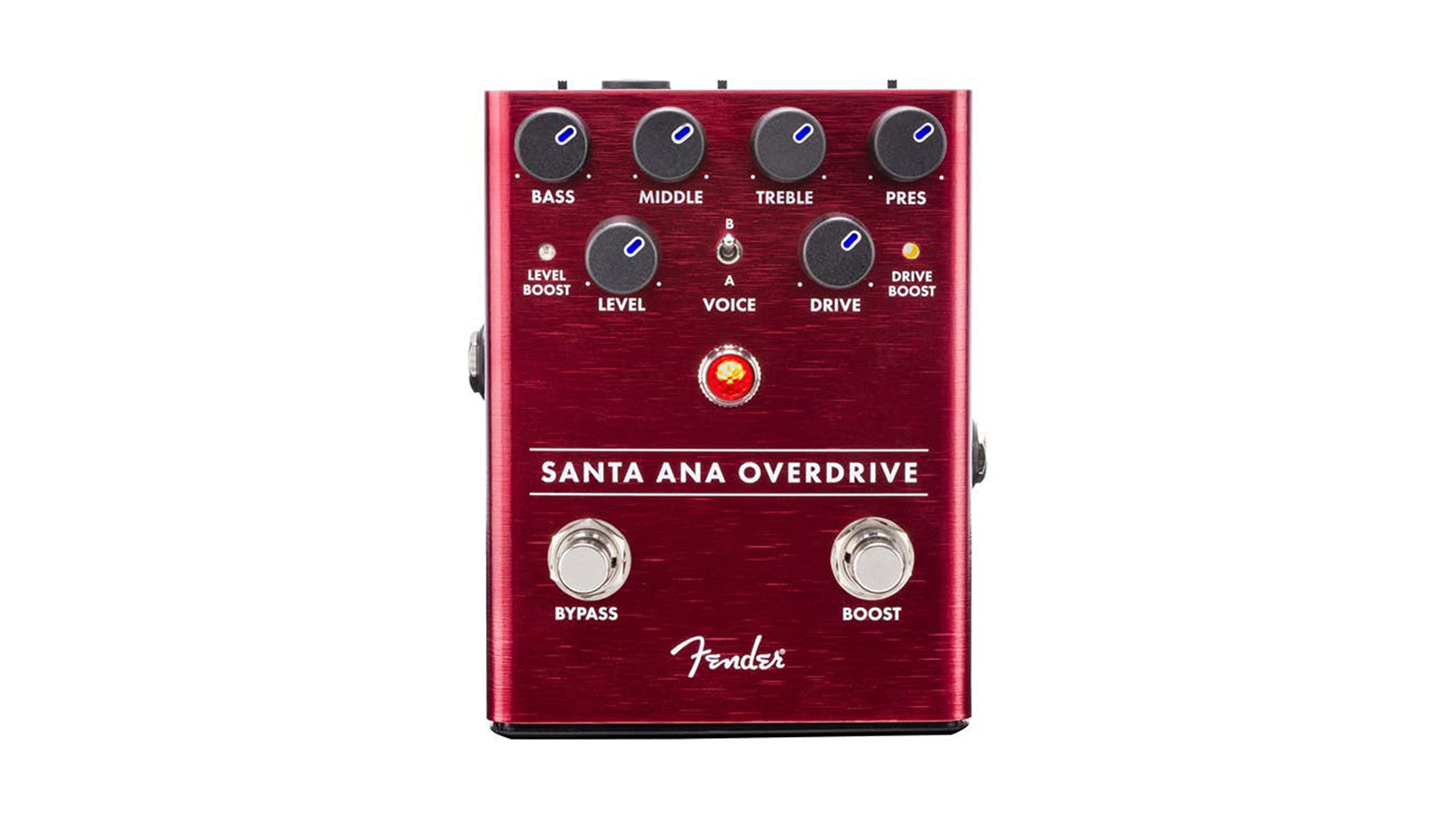
Fender Santa Ana – $249.99 / £169
A dual-footswitch FET-based drive and boost pedal, the Santa Ana offers two different voices (American and British) with a four-knob amp-style EQ. The footswitchable boost can boost either the drive stage or the output volume.
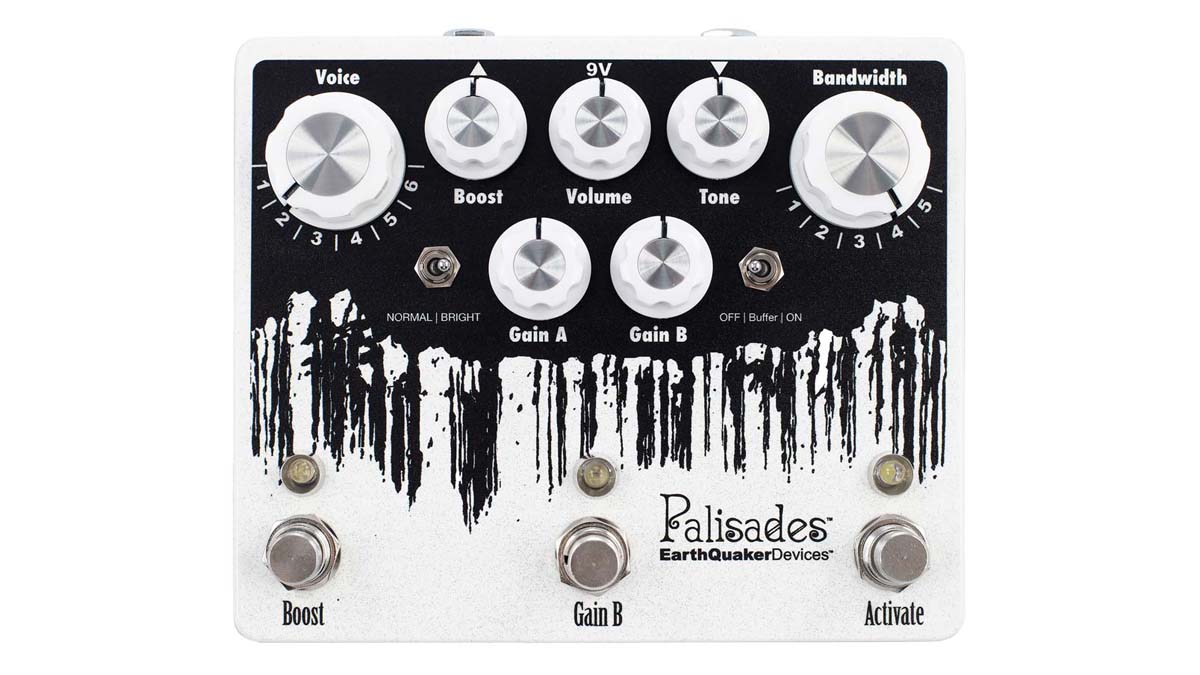
EarthQuaker Devices Palisades – $249 / £249
Two channels of drive, one with higher gain than the other, and a separately footswitchable boost offer instant access to four different gain levels. For the drive sound there’s a choice of six clipping voices and five different bandwidth settings.
Trevor Curwen has played guitar for several decades – he's also mimed it on the UK's Top of the Pops. Much of his working life, though, has been spent behind the mixing desk, during which time he has built up a solid collection of the guitars, amps and pedals needed to cover just about any studio session. He writes pedal reviews for Guitarist and has contributed to Total Guitar, MusicRadar and Future Music among others.
“Sonically excellent… we found that it could be a viable substitute for our vintage 1970s pedals”: Hamstead x That Pedal Show Redwing Analogue Stereo Modulator review
“The original Jordan Boss Tone was probably used by four out of five garage bands in the late ’60s”: Unpacking the gnarly magic of the Jordan Boss Tone – an actual guitar plug-in that delivers Dan Auerbach-approved fuzz
